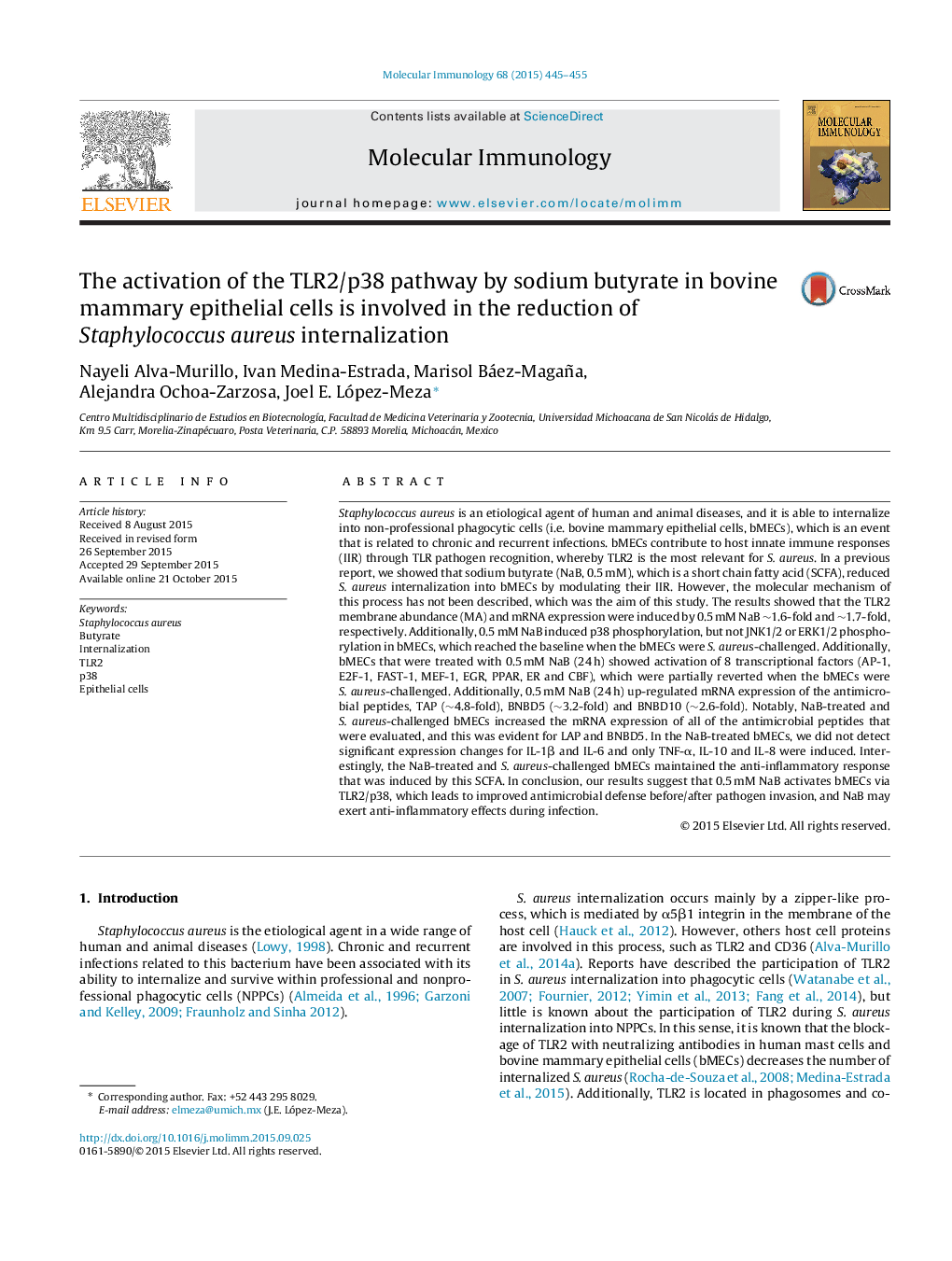| کد مقاله | کد نشریه | سال انتشار | مقاله انگلیسی | نسخه تمام متن |
|---|---|---|---|---|
| 2830582 | 1163741 | 2015 | 11 صفحه PDF | دانلود رایگان |

• Sodium butyrate as a regulator of the innate immune response in mammary epithelium.
• S. aureus internalization is reduced by sodium butyrate in mammary epithelium.
• The S. aureus internalization reduction correlates with TLR2/p38 pathway activation.
• Sodium butyrate improves the antimicrobial defense against pathogen invasion.
Staphylococcus aureus is an etiological agent of human and animal diseases, and it is able to internalize into non-professional phagocytic cells (i.e. bovine mammary epithelial cells, bMECs), which is an event that is related to chronic and recurrent infections. bMECs contribute to host innate immune responses (IIR) through TLR pathogen recognition, whereby TLR2 is the most relevant for S. aureus. In a previous report, we showed that sodium butyrate (NaB, 0.5 mM), which is a short chain fatty acid (SCFA), reduced S. aureus internalization into bMECs by modulating their IIR. However, the molecular mechanism of this process has not been described, which was the aim of this study. The results showed that the TLR2 membrane abundance (MA) and mRNA expression were induced by 0.5 mM NaB ∼1.6-fold and ∼1.7-fold, respectively. Additionally, 0.5 mM NaB induced p38 phosphorylation, but not JNK1/2 or ERK1/2 phosphorylation in bMECs, which reached the baseline when the bMECs were S. aureus-challenged. Additionally, bMECs that were treated with 0.5 mM NaB (24 h) showed activation of 8 transcriptional factors (AP-1, E2F-1, FAST-1, MEF-1, EGR, PPAR, ER and CBF), which were partially reverted when the bMECs were S. aureus-challenged. Additionally, 0.5 mM NaB (24 h) up-regulated mRNA expression of the antimicrobial peptides, TAP (∼4.8-fold), BNBD5 (∼3.2-fold) and BNBD10 (∼2.6-fold). Notably, NaB-treated and S. aureus-challenged bMECs increased the mRNA expression of all of the antimicrobial peptides that were evaluated, and this was evident for LAP and BNBD5. In the NaB-treated bMECs, we did not detect significant expression changes for IL-1β and IL-6 and only TNF-α, IL-10 and IL-8 were induced. Interestingly, the NaB-treated and S. aureus-challenged bMECs maintained the anti-inflammatory response that was induced by this SCFA. In conclusion, our results suggest that 0.5 mM NaB activates bMECs via TLR2/p38, which leads to improved antimicrobial defense before/after pathogen invasion, and NaB may exert anti-inflammatory effects during infection.
Journal: Molecular Immunology - Volume 68, Issue 2, Part B, December 2015, Pages 445–455